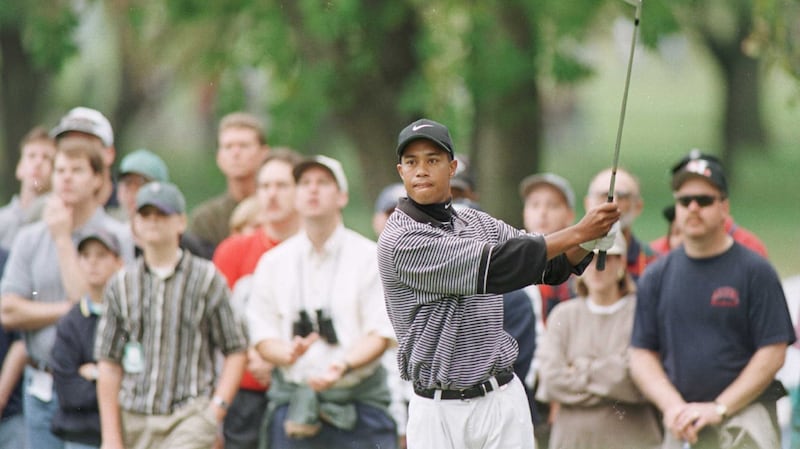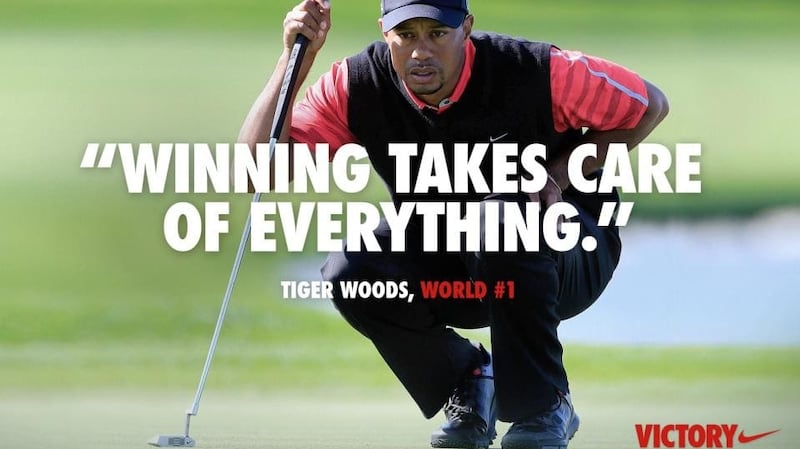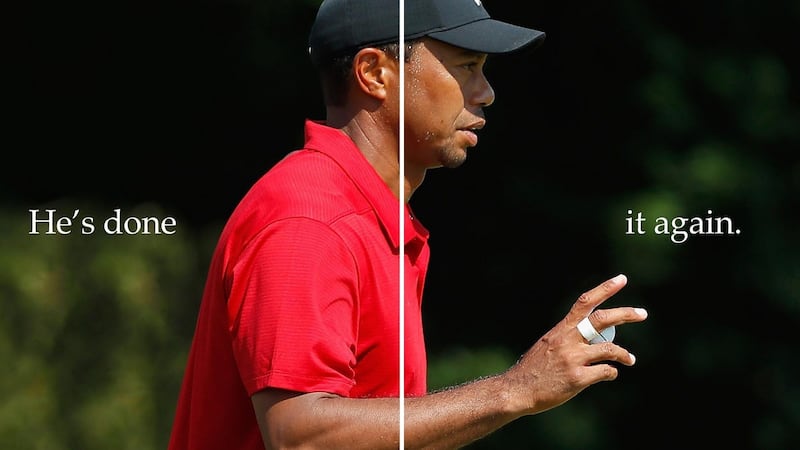The first time most of us saw Tiger Woods was in a Nike advert. 'Hello World' aired in 1996, when the 21-year-old had just turned pro after leaving college.
He was a month into his first Nike contract, reported to be worth $40 million, and the script of that first ad set the tone for the following decade. The message was clear: Tiger was about more than golf, he was a walking, talking brand.
“Hello world. I shot in the 70s when I was 8. I shot in the 60s when I was 12. I played in the Nissan Open when I was 16.”
“Hello world. There are still courses in the US I am not allowed to play because of the colour of my skin.”
“Hello world. I’ve heard I’m not ready for you. Are you ready for me?”
A working definition of a brand is a product with a story attached. Rewatching these early ads now, 20 years on, reveals clearly how Nike’s marketing team wanted to position their new asset.

Ethnicity was at the centre of the narrative. A decade before Barack Obama ran to the White House on the same ticket, here was a brilliant, charismatic black man selling hope.
So Woods’s first Major win at Augusta in 1997 was not only breathtaking, it was so ‘on brand’. The black kid winning at The Masters, where his skin colour would have prevented him playing until 1975, and where it was compulsory to have a black caddie until 1983.
That victory was a dream for those seeking to build Brand Tiger into a sporting Martin Luther King: Martin X in a red t-shirt. Golf was then and remains a predominantly white, middle class, middle-aged sport and Tiger represented change.
“I want golf to look like America,” said Woods in an early interview.
Powerful people projected on to Woods their own agendas.
"If they [sports stars] can sell these wares with the power of their personas, they also can sell civic responsibility with the power of their personas," said the politician and civil rights campaigner Jesse Jackson in 1996.

The tenor of those early Nike ads was a double-edged sword however. On the plus side it captured the imagination in a way no golfer had since Arnold Palmer in the early days of television. But Woods was always meant to be about more than that, raising expectations that could never be sustained by a mere human being.
The subtext was that here was someone who would single-handedly take golf in a different direction, a cultural force that would help American golf come to terms with its racist history and bring in a whole new ethnically diverse audience.
This was always an overclaim. The USGA’s figures on golf participation among ethnic minorities shows that Tiger’s legacy in this area has been negligible.
Diversity participation
“You really haven’t seen any increase in diversity participation since Woods came to the forefront, which is really disconcerting,” said Ted Bishop, the former PGA of America president.
Even in the professional game there are fewer black players on Tour than in 1996 and, as the job has become more lucrative, even most of the caddies are white.
In reality, Tiger was a reluctant social reformer; He was a great golfer who just happened to be black.
It followed that, over the years, Nike’s messages around Tiger shifted, becoming more morally neutral, less confrontational. Here’s Tiger being faux self-deprecating, walking across water to pick up his ball from a lily pad, or playing an insanely difficult game of keepy-uppy with a wedge.
Tiger was becoming famous less for hope than for being one of the richest men in the world. Sponsorship money flooded in as he became the public face of faceless bureaucratic conglomerates such as Gillette, Accenture and Buick. His income from winning golf tournaments was dwarfed ten-fold by the money he made shifting product.

And then came the crash.
Most of the sponsors got away as fast as their lawyers could manage, pulling their advertising and quietly refusing to renew their contracts.
Nike stayed, perhaps because dropping Tiger would have been the more expensive option. Their relationship was about more than image and marketing: for all intents and purposes, Nike Golf was Tiger Woods. It was a business they built together and so the player’s fall from grace left the company with a problem which has taken them most of the last decade to resolve. In 2016, Nike closed its golf division, moving out of the club and ball market, while retaining the clothing and shoe lines.
So perhaps we can forgive Nike the triumphalism around Sunday’s epic Masters win. They will milk The Second Coming for all its worth. It’s a story that only the hardest of hearts would begrudge him.
And in the end, Tiger’s tale was about us – the adoring fans and the previously smitten media – who played such a big role in helping create the myth the first time around.
Having bought the hype on the way up, we felt stupid when the Tiger Woods brand was revealed to be just another advertising conceit, like kids being told that Father Christmas is a womanising drunk.
Will this time be any different? Judging by the scenes around Augusta’s 18th hole on Sunday, it’s very clear that the excitement around Tiger 2.0 will be hard to resist. If the last 20 years has taught us anything, it’s that we’re suckers for a great story.











